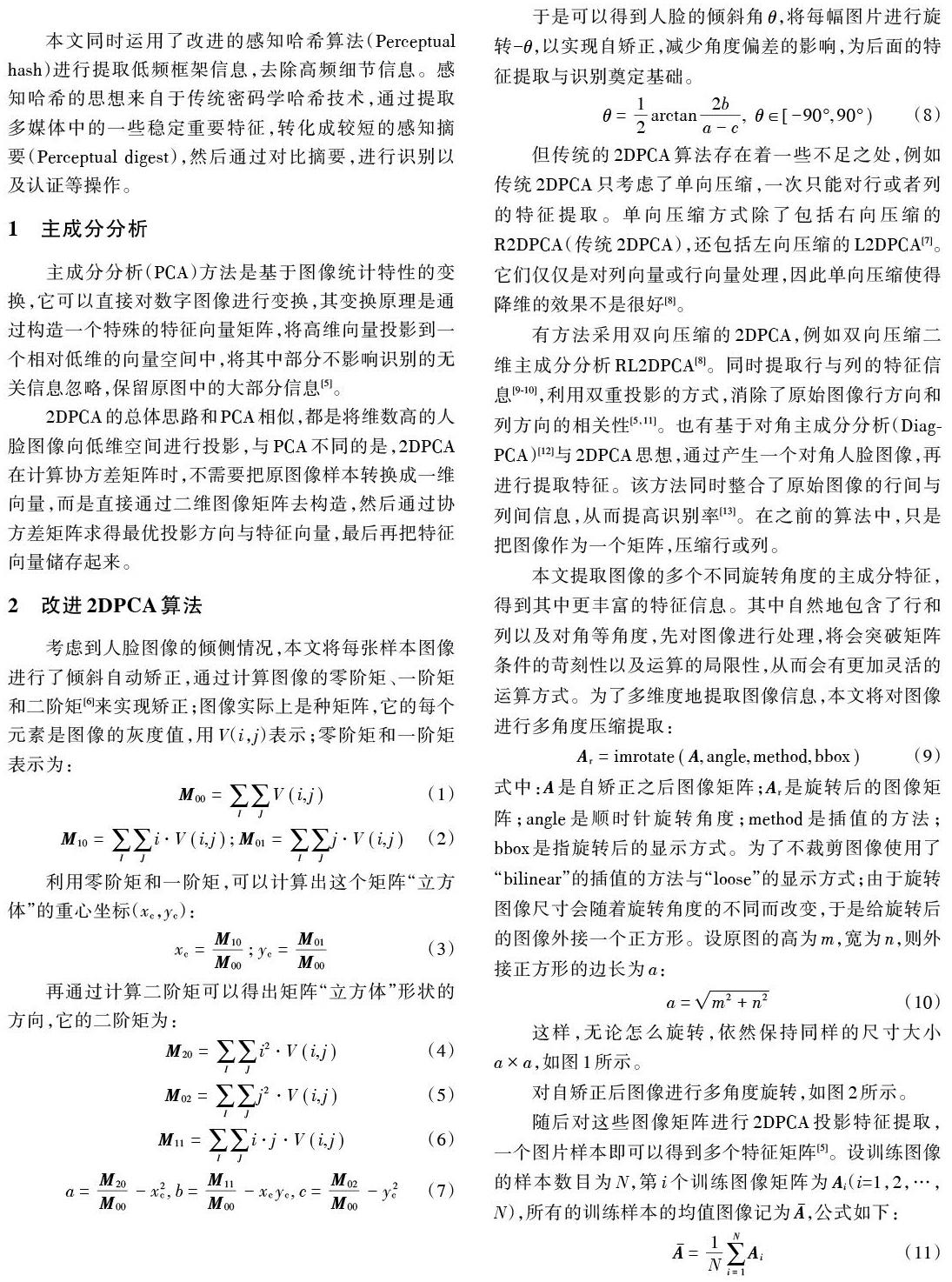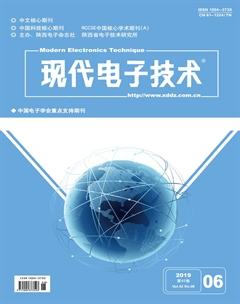改进的二维主成分分析的人脸识别新算法
陆振宇 傅佑 邱雨楠 陆冰鉴
关键词: 二维主成分分析; 人脸识别; 改进的感知哈希技术; 多角度旋转; 图像特征提取; 角度自矫正
中图分类号: TN911.73?34 文献标识码: A 文章编号: 1004?373X(2019)06?0055?05
Abstract: The traditional two?dimensional principal component analysis (2DPCA) only extracts the in?line features of human face image data during the transformation, and the feature extraction is relatively single direction?oriented, without considering feature extractions in other directions. Therefore, a human face recognition algorithm based on the improved 2DPCA is proposed, so as to extract image features from multiple angles and provide more abundant information for recognition. In the algorithm, the tilt angle self?correction is conducted for human face images, and meanwhile, the low frequency information of images is extracted. The improved perceptual hash technology is used to obtain the "fingerprints" of images. The multi?angle rotation is conducted for human face images after self?correction. Features are respectively extracted to obtain the image feature information after multi?angle rotation. The new algorithm was tested with the ORL human face library. The results show that the improved algorithm is superior to the traditional 2DPCA.
Keywords: 2DPCA; human face recognition; improved perceptual hash technology; multi?angle rotation; image feature extraction; angle self?correction
0 引 言
人脸识别技术由于采集的特征不易被他人伪造与窃取,同时属于非接触性的生物特征采集技术,具有隐蔽、方便和随意采集的优势,是当前身份验证的主要方法之一[1?2]。
目前,人脸识别方法较多。主流的人脸识别技术可分为三类。第一类,基于几何特征的方法;第二类,基于模版的方法,这一类包括了特征脸方法、线性判别分析方法、奇异值分解方法、神经网络方法和动态连接匹配方法等;第三类,基于模型的方法,其中包括隐马尔可夫模型,主动形状模型和主动外观模型的方法等[3?4]。本文采用基于模版的方法:特征脸的方法,基于2DPCA(二维主成分分析)算法的改进。2DPCA算法是基于PCA(主成分分析)方法的改进,其直接利用二维投影的方法,特征提取时基于二维矩阵而不是一维向量。使用2DPCA计算出来的协方差矩阵与PCA计算出来的协方差矩阵相比,要相对直观与便捷,计算量也大大减少,耗时减少,提取特征更加高效[2]。


将自校准角度后的样本图像先进行缩小尺寸,压缩成32×32大小,然后计算图像DCT变换,得到32×32的DCT系数矩阵,再提取左上角8×8的矩阵,它是图片的最低频率部分,传统算法是直接计算这64个值的平均值,将每个位置的值与均值进行比较[16]。
为了突出频率分布的特点,本文将8×8的矩阵进行统一分块划分为4个4×4的矩阵,如图3所示;然后分别计算每个4×4矩阵的16个值的平均值,矩阵的每个位置的值分别与对应的均值进行比较,大于或等于均值的位置赋值为1,其他位置赋值为0,将共64位的比较结果,按顺序组合在一起,构成一个64位的整数,便得到这张图像的“指纹”;最后计算不同图像的指纹之间的汉明距离,即两个字符串对应位置的不同字符的个数[16]。汉明距离距离越小,认为两幅图像之间低频部分更相似。最后综合主成分分析结果,得出识别结果。

